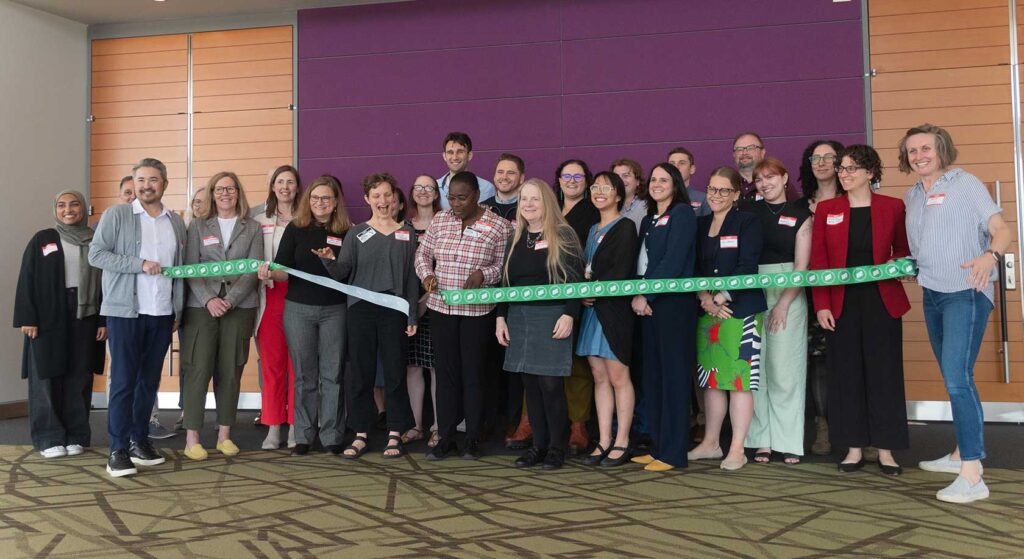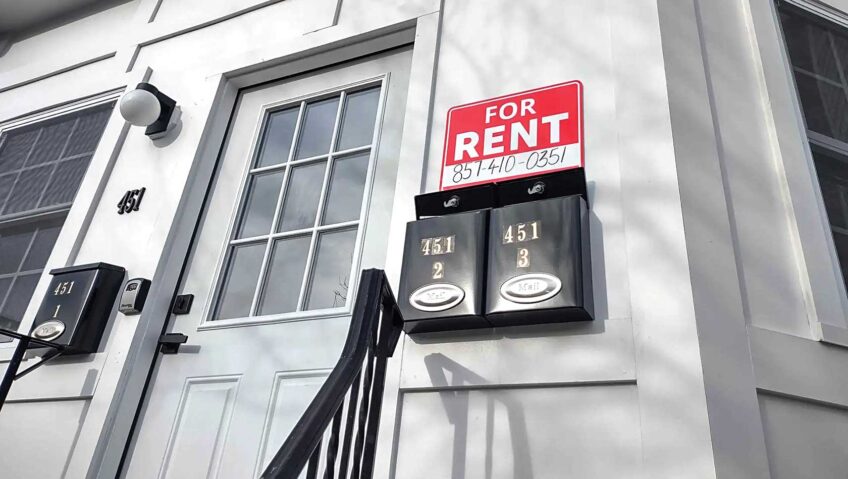
As colleges and universities across the Boston area celebrated the completion of degrees for their students, a cohort of local organizations celebrated a different kind of graduation — all in the name of climate justice.
At a celebration, May 28, a group of nine organizations with focuses spanning from cultural to affordable housing to operating the state’s convention centers gathered to mark the end of a nine-month program developing organizational climate action plans.
The cohort was the fourth to complete a collaborative climate action planning program organized by the Green Ribbon Commission, a coalition of local businesses and leaders focused on accelerating green efforts across the city.
Amy Longsworth, executive director of the Green Ribbon Commission, said she was excited to see the level of engagement from cohort members.
“It’s very heartening to realize that they’re not just doing it because they have to,” Longsworth said. “They’re doing it because they want to and because they know it’s the right thing because they can see the writing on the wall.”

Amy Longsworth, executive director of the Green Ribbon Commission, congratulates members of its Collaborative Climate Action Planning Cohort. PHOTO: AVERY BLEICHFELD/BAY STATE BANNER
Over the course of the program, representatives from each organization developed plans to help their respective groups reduce their emissions and prepare for the impacts of climate change.
The program was first launched, in part, with the then-pending implementation of the Building Emissions Reduction and Disclosure Ordinance, or BERDO. That 2021 legislation from the Boston City Council set requirements for large buildings — those over 20,000 square feet, or residential buildings with at least 15 units — to report their carbon emissions and establish a plan to reduce those emissions with benchmarks until they reach net-zero emissions by 2050.
Noah Frigault, director of special initiatives at the Commonwealth Land Trust, one of the members of the latest cohort, called the changes “integral to the long-term success of our organizations.”
The program is aimed at tailoring efforts to each specific organization. Jennifer Haugh — vice president of planning and customer engagement at Greener U, which provided technical expertise and guidance to cohort members — said the biggest challenge for a lot of the nonprofits, especially those with work not directly tied to the environment, is linking the plan to its existing goals. The best climate action plans, she said, were the ones that understood and worked in harmony with each organization’s mission.
“For some organizations, that mission of the organization might be music or culture, and it’s harder to make those day-to-day activities that are associated with their mission connect to the broader topic of climate change,” Haugh said. “The most successful climate action planning processes are going to be the ones that really zero in on that message and connect it with what they do.”
The program takes a broad approach. Longsworth touted its comprehensive nature, which guides participants with three objectives: to reduce and mitigate emissions, to increase resilience, and to work toward climate justice.
Dallase Scott, founder and principal at climate-consultancy firm Trust, who ran the program, compared the course’s three pillars to steps taken to reduce harm if a car crashes into a wall.
Mitigation efforts, things that reduce the amount of greenhouse gas emissions released, are like trying to slow the car, while steps to increase resilience and prepare for the impacts of climate change are like adding sandbags in front of the wall or making sure there are airbags. Climate justice work includes thinking about who is driving the car and who has historically had access to seatbelts and first responders in the aftermath.
For Longsworth, the resilience and mitigation efforts go hand in hand, but she acknowledges that the benefits of reducing emissions right now won’t pan out for a long time.
“That’s not going to happen for a century, so we need to focus on both of them at once, right now,” Longsworth said. “And we need to do it in a way that’s equitable.”
Scott called out “innovation at the expense of others” — moments like the city’s history with urban renewal and building freeways to speed travel but cutting through neighborhoods of color in the process.
“We can absolutely do that again if we’re not intentional around it, so that’s where the climate justice piece is,” Scott said. “We need to transition to a new energy system; we need to transition away from fossil fuels, but not at the expense of others who have historically been marginalized time and time again.”
For members of the cohort, that comprehensive approach played out in increased communication with the communities they work with.
Frigault said that, as part of the climate justice pillar, he had conversations with residents that the Commonwealth Land Trust serves to see how the climate action plan changes would impact them and what their opinion was.
“It was great that they were supportive and letting me do that,” he said.
During the graduation event, Frigault presented the Commonwealth Land Trust’s action plan and said that engagement with residents also led to a greater understanding of their priorities.
Members of that community, he said, weren’t especially invested in conversations around the environmental impacts of mitigation and resilience efforts but were more engaged when they understood how more efficient energy operations would save money and make more funding available for other work the organization does.
The cohort was also designed to support learning between the member organizations, something that Longsworth said was bolstered by the variety of organizations in the cohort. The most recent group included organizations like the Boston Symphony Orchestra and Boston Youth Symphony Orchestras, the Allston Brighton Community Development Corporation, Trustees of Reservations and the Massachusetts Convention Center Authority.
“We came up with this idea of putting them all into one group and letting them learn from each other as they went, and it really has worked,” Longsworth said.
It’s a design that slots in with the program’s broader aims to teach its participants not just about what steps might help reduce emissions and prepare for the impacts of climate change but also about how to communicate what those efforts are and why they’re worth taking up.
Frigault said he found the collaborative nature of the program helpful as he tried to grapple with pending deadlines under BERDO and the looming impacts of a changing climate.
“There’s this huge urgency to get all this stuff done, and it’s very complicated and time-consuming,” he said. “We’re all nonprofits where this is not necessarily part of our mission. So being able to see how the other folks were in their journey was really helpful.”
The Green Ribbon Commission’s program, however, may be poised to shift. It had its roots in helping Boston organizations — especially large cultural ones — prepare for the kind of operational shifts that would be necessary under BERDO.
But now that BERDO has officially kicked into gear this year, with the first standards for emissions going into place, many of the city’s cultural institutions have already gone through the program. Its first cohort, in 2022, included some of the city’s largest institutions, including the Museum of Fine Arts, the Museum of Science, and the Huntington Theater Company.
That more urgent focus on BERDO compliance is leading to increased interest in programs aimed at training organizations and building owners in the more nitty-gritty engineering of how to reduce their emissions, Longsworth said.
Scott said she welcomed those other programs that fill gaps that the Green Ribbon Commission’s program doesn’t get to.
“We only have so much time together, and we’re only going to go so deep with BERDO,” Scott said.
The changing landscape also means the Green Ribbon Commission’s program is taking a pause to adjust. Normally, the next cohort would begin in September, but at the event, Longsworth announced it wouldn’t begin until January to give more time to recruit and build the group.
The Green Ribbon Commission’s program will continue to focus on establishing the broader goals — and training organizations how to communicate why they’re worth it — internally. Once organizations have their climate action plans, they can tap the technical experts needed to take the steps that will lead to specific emissions reductions required under BERDO.
“Everyone actually just got to the starting line,” Scott said. “The strategic plan is supposed to make doing the work easier for you, but … you’re not done.”
Although the program’s next steps are still coming together, Longsworth is celebrating the work they’ve done so far.
“It may have been a thing that was perfect for its time and now it’s over, or it may be that we morph it a little bit and we update it and get a lot more interest,” she said. “The future is unwritten.”






